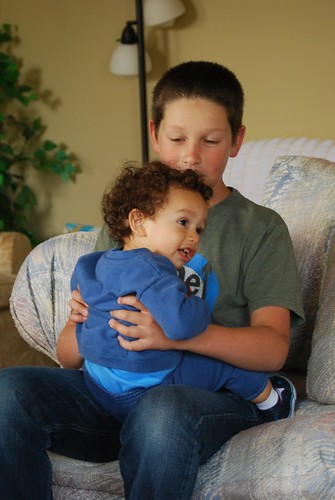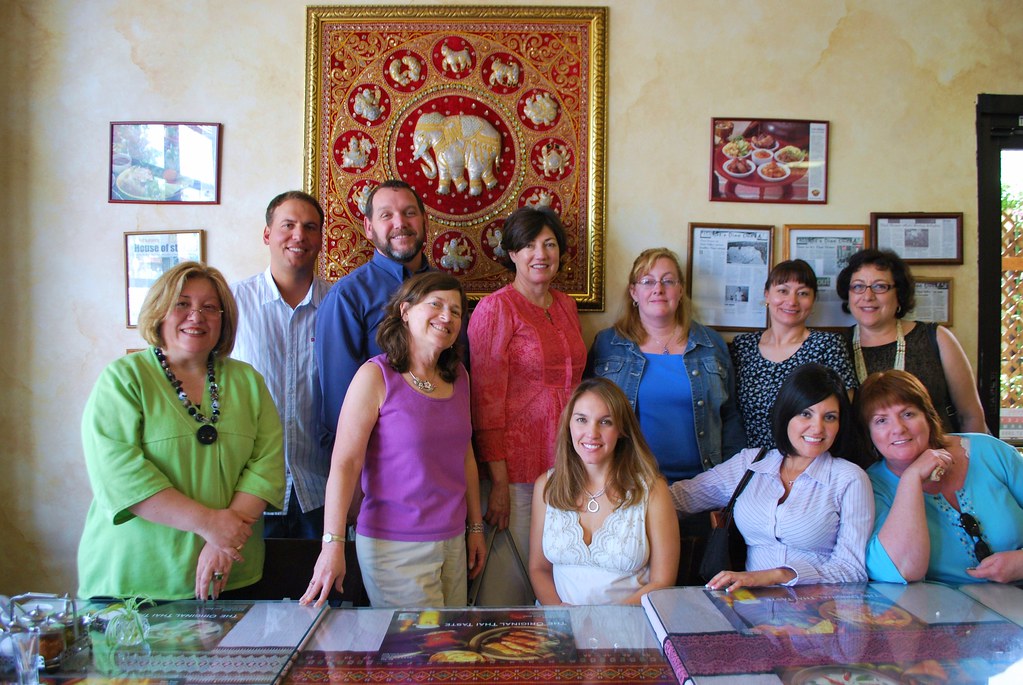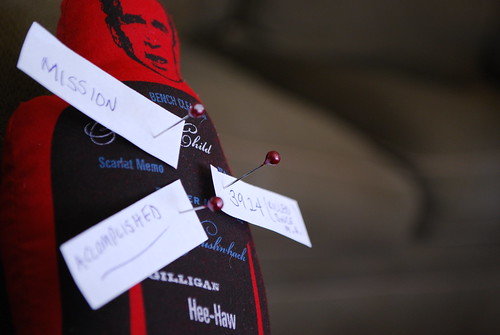Saturday, May 31, 2008
Friday, May 30, 2008
From the Washington Times
California's safe-house soldiers
Julia Duin
SIMI VALLEY, Calif. - One of the most dramatic stories in America's immigration saga occurs here every Sunday morning on Royal Avenue outside Simi Valley United Church of Christ.
In this affluent, well-scrubbed community just down the road from the Ronald Reagan Presidential Library and Museum, a handful of people, bearing American flags and signs, parade up and down the sidewalk.
They used to shout anti-immigrant slogans through bullhorns, said the Rev. June Goudey, the pastor of about 80 souls.
The target of their ire lives in a small house behind the church and down the end of a driveway. She is Liliana, 29, a Mexican citizen.
She is one of the better-known participants in the new sanctuary movement, examined by The Washington Times in visits to eight churches to interview activists, pastors and the illegal immigrants they are sheltering. The subjects offered firsthand accounts of living on the run, insights into the goals of the movement and spiritually based justifications for flouting U.S. immigration laws.
California, which houses one-third of the nation's immigrants, is the epicenter of sanctuary activity. Liliana, who shows up at an interview wearing high heels, gaucho pants and a stylish blouse, is one of the more outgoing and telegenic of several immigrants camped out in Sunday-school rooms and offices throughout the southern half of the state. She seeks not to be deported from a country where she has lived a third of her life.
Simi Valley UCC voted to give her shelter July 8, declaring itself a sanctuary congregation and plowing more than $5,000 into remodeling a house on church property. On Sunday mornings, she and her children walk to the church.
"There is something powerfully holy happening here," Ms. Goudey said. "When that family worships with us, we are strengthened. People have rallied amazingly well."
The raid
Liliana was 19 when she tried sneaking across the U.S. border in 1998, carrying a fake birth certificate and trying to join the rest of her family living in the United States.
I didn't know what the consequences of breaking the law were," she said. When she was caught and deported, her name was placed in a database. Two months later, she paid a smuggler $2,500 to successfully sneak her across. She married a U.S. citizen, had three children - who are also citizens - and in 2005 bought a home in Oxnard, Calif., with her husband, a forklift operator and pizza delivery man.
But she was not aware of the deportation order issued for her in 1999. At 6:20 a.m. on May 16, 2007, five officers from the Immigration and Customs Enforcement (ICE) showed up at her door.
Liliana, with her 4-month-old son, Pablito, have been living at the United Church of Christ in Simi Valley, Calif., since August. When Immigration and Customs Enforcement officers showed up at her door last May, she convinced them to give her time to settle her affairs, then fled.
She recalled that her husband shook her awake, saying the police had come for her. Groggily walking into her kitchen, she saw the ICE insignia on the officers' coats. One of the agents asked her in Spanish why she was crying.
"You're not police; you're Immigration," she said.
"You're right and I've come for you," he said.
"Please don't take me. My kids are here and I can't leave them," she said. Her 4-year-old daughter, Suzy, and her newborn son, Pablito, both began to wail.
"I've got a 2-month-old baby," she protested. She asked the officers whether she could feed him. They agreed, although one officer urged the rest to arrest her on the spot.
"She doesn't even have her shoes on," she remembered a female officer saying.
"Give me a week," Liliana pleaded. "My husband doesn't know where the kids' doctors are, where their vaccination certificates are."
"No, two days," they said. They finally compromised on five days, at which point she had to show up at an ICE office in Camarillo without Pablito.
Liliana sprang into action, contacting a lawyer to find out her rights. lf returned to Mexico, she was told, she would never get back to the U.S. because of the false birth certificate - a felony offense. The lawyer put her in touch with a branch of the new sanctuary movement in Ventura County and, on May 20, Liliana fled to St. Rita's Roman Catholic Church in Sierra Madre and then to St. Luke's Episcopal Church in Long Beach.
Protesters stood outside the Episcopal church, and on Aug. 28, Liliana was transferred to more permanent lodgings at the UCC congregation in Simi Valley, only a half-hour away from her family. Posted by her phone is a list of emergency plans and an order of calls to make in case of an ICE raid, plus local police numbers in the event any demonstrators try to break in.
The protests
Still, the church was not prepared on Sept. 16 when 125 protesters, some counterprotesters and a group of skinheads showed up. Five hundred police officers and sheriff's deputies were sent to the scene. The next day, Simi Valley Mayor Paul Miller told a City Council meeting that he would bill the church for $39,306 in police overtime.
After negotiations with the church and an implied threat from the American Civil Liberties Union, the mayor backed down, but the protesters - including watchdog groups known as the Minutemen and Save Our State - have not.
"We want to make a statement," said Tony Dolz, the Minuteman chapter director for greater Los Angeles and a legal immigrant from Cuba. "We decided to target that church. The whole sanctuary movement follows a pattern. They are shuffling felons from church to church.
"If you take illegal aliens in and hide them and give them food and access to services and protect them, you are aiding and abetting. That is a felony. This is a mockery of the rule of law.
"These churches want to use the shield of religion to justify breaking the law. They want special treatment they are not entitled to. We will go after anyone who disrespects our borders and our laws."
Offer of help
The Rev. Alexia Salvatierra, a Lutheran pastor, holds court in a windowless office in downtown Los Angeles filled with Madonnas and bumper stickers with Spanish slogans. It takes weeks to get a hold of, much less arrange an interview with this driven woman.
"The current immigration system is ineffectual and immoral," she said, ignoring the frequent beeps of her cellular phone. "It's not a question of whether you break the law. It's what is an appropriate punishment."
The California director of Clergy and Laity United for Economic Justice (CLUE) since 2002, she was a seminary student in the 1980s during the first sanctuary movement for Central American refugees. Fellow church members were arrested for transporting such immigrants, a felony.
Twenty years later, she was appalled to learn of a proposed 2005 bill by Rep. F. James Sensenbrenner Jr., Wisconsin Republican, that would impose huge fines on employers of illegal aliens.
She sent people to line the wall and pray during Judiciary Committee hearings. Others were sent to talk with senators. After the bill failed, CLUE and like-minded activists mapped out a new strategy involving America's houses of worship.
"In the early sanctuary movement, by publicizing their stories, we were able to change American perceptions of the refugees from Central America," Ms. Salvatierra said. "We felt that if we lifted up the stories of the immigrants, then the average American would understand what is happening."
Within a year, she and other pro-immigrant clergy were hatching a plan to do just that. The "new sanctuary movement" would be based in Chicago, but Ms. Salvatierra would oversee the crux of the operation in California. First she had to raise about $1 million.
"The whole movement had no money for six months," she recalled. "My daughter called it my night job because I was up till 3 a.m. writing grant proposals. It's a seven-day-a-week job.
"But it's a movement. And when a movement comes to you, it defines you for life on how you respond."
Eventually, 25 congregations - including three synagogues - in the Los Angeles area committed to being involved in offering sanctuary or supporting houses of worship that did. Several foundations - she would only name the Haas Jr. Fund, Ford Foundation and Four Freedoms Fund - chipped in money.
"Most people don't realize there are very few categories in which you can legally apply to be a citizen," she said. "Ninety-seven percent of the undocumented men are here working. There are jobs for them. Our system has no compassion in the biblical sense of the word."
Part of her job is to sell the idea to more-conservative churchgoers who say sheltering illegals is breaking the law.
"We are not breaking the law to offer sanctuary," she said a bit wearily. "It would be illegal if we were hiding them. Sanctuary is an act of biblical hospitality. It's the rent you pay to live in the universe."
The gardener
Since the end of July, Yolanda Morales, 53, has been holed up in a renovated storage room at Immanuel Presbyterian Church on Wilshire Boulevard.
Ms. Morales loves the roof garden at this majestic stone church, where she has planted squash, beans, herbs, eggplant, tomatoes, marigolds and peppers, plus a lemon tree.
After she arrived illegally in 1989 as a single mother from Guatemala, she got hired as a janitor and house cleaner. In 1990, she had a daughter, Annabella Trujillo, now 18. She brought her other two children north in 1995; Annabella being the sole U.S. citizen in the family.
Although she managed to land a work permit, a judge denied her request for a green card. She has spent $8,000 on attorneys. In January 2007, she received a deportation order that gave her 60 days to leave the country. She hid out until May 9, 2007, when she attended a press conference in Los Angeles announcing the launch of a new sanctuary movement for people like her.
Her pastor suggested she apply.
"I didn't hesitate much because if I was deported, my daughter would be here alone," said Ms. Morales, herself orphaned at age 15.
She stashes drinks, fruit, a half-eaten roast chicken and a few utensils in a sparse kitchen that opens out on an air shaft. Afraid of being arrested by any ICE agents lurking about, she does not venture beyond church walls.
To keep her spirits up, she listens to Christian music, pets the two gray-and-white cats that lounge around and recites portions from the Book of Psalms. The church has made her a deacon, allowing her to administer Communion. She also sings in the choir and volunteers for the women's ministry.
"They treat me like family here," she said. "People bring me juice, fruit, toothpaste, a meal. They allow me to feel supported in the midst of all the anti-immigrant people."
www.washtimes.com/news/2008/may/30/californias-safe-house-soldiers/?page=5
Julia Duin
SIMI VALLEY, Calif. - One of the most dramatic stories in America's immigration saga occurs here every Sunday morning on Royal Avenue outside Simi Valley United Church of Christ.
In this affluent, well-scrubbed community just down the road from the Ronald Reagan Presidential Library and Museum, a handful of people, bearing American flags and signs, parade up and down the sidewalk.
They used to shout anti-immigrant slogans through bullhorns, said the Rev. June Goudey, the pastor of about 80 souls.
The target of their ire lives in a small house behind the church and down the end of a driveway. She is Liliana, 29, a Mexican citizen.
She is one of the better-known participants in the new sanctuary movement, examined by The Washington Times in visits to eight churches to interview activists, pastors and the illegal immigrants they are sheltering. The subjects offered firsthand accounts of living on the run, insights into the goals of the movement and spiritually based justifications for flouting U.S. immigration laws.
California, which houses one-third of the nation's immigrants, is the epicenter of sanctuary activity. Liliana, who shows up at an interview wearing high heels, gaucho pants and a stylish blouse, is one of the more outgoing and telegenic of several immigrants camped out in Sunday-school rooms and offices throughout the southern half of the state. She seeks not to be deported from a country where she has lived a third of her life.
Simi Valley UCC voted to give her shelter July 8, declaring itself a sanctuary congregation and plowing more than $5,000 into remodeling a house on church property. On Sunday mornings, she and her children walk to the church.
"There is something powerfully holy happening here," Ms. Goudey said. "When that family worships with us, we are strengthened. People have rallied amazingly well."
The raid
Liliana was 19 when she tried sneaking across the U.S. border in 1998, carrying a fake birth certificate and trying to join the rest of her family living in the United States.
I didn't know what the consequences of breaking the law were," she said. When she was caught and deported, her name was placed in a database. Two months later, she paid a smuggler $2,500 to successfully sneak her across. She married a U.S. citizen, had three children - who are also citizens - and in 2005 bought a home in Oxnard, Calif., with her husband, a forklift operator and pizza delivery man.
But she was not aware of the deportation order issued for her in 1999. At 6:20 a.m. on May 16, 2007, five officers from the Immigration and Customs Enforcement (ICE) showed up at her door.
Liliana, with her 4-month-old son, Pablito, have been living at the United Church of Christ in Simi Valley, Calif., since August. When Immigration and Customs Enforcement officers showed up at her door last May, she convinced them to give her time to settle her affairs, then fled.
She recalled that her husband shook her awake, saying the police had come for her. Groggily walking into her kitchen, she saw the ICE insignia on the officers' coats. One of the agents asked her in Spanish why she was crying.
"You're not police; you're Immigration," she said.
"You're right and I've come for you," he said.
"Please don't take me. My kids are here and I can't leave them," she said. Her 4-year-old daughter, Suzy, and her newborn son, Pablito, both began to wail.
"I've got a 2-month-old baby," she protested. She asked the officers whether she could feed him. They agreed, although one officer urged the rest to arrest her on the spot.
"She doesn't even have her shoes on," she remembered a female officer saying.
"Give me a week," Liliana pleaded. "My husband doesn't know where the kids' doctors are, where their vaccination certificates are."
"No, two days," they said. They finally compromised on five days, at which point she had to show up at an ICE office in Camarillo without Pablito.
Liliana sprang into action, contacting a lawyer to find out her rights. lf returned to Mexico, she was told, she would never get back to the U.S. because of the false birth certificate - a felony offense. The lawyer put her in touch with a branch of the new sanctuary movement in Ventura County and, on May 20, Liliana fled to St. Rita's Roman Catholic Church in Sierra Madre and then to St. Luke's Episcopal Church in Long Beach.
Protesters stood outside the Episcopal church, and on Aug. 28, Liliana was transferred to more permanent lodgings at the UCC congregation in Simi Valley, only a half-hour away from her family. Posted by her phone is a list of emergency plans and an order of calls to make in case of an ICE raid, plus local police numbers in the event any demonstrators try to break in.
The protests
Still, the church was not prepared on Sept. 16 when 125 protesters, some counterprotesters and a group of skinheads showed up. Five hundred police officers and sheriff's deputies were sent to the scene. The next day, Simi Valley Mayor Paul Miller told a City Council meeting that he would bill the church for $39,306 in police overtime.
After negotiations with the church and an implied threat from the American Civil Liberties Union, the mayor backed down, but the protesters - including watchdog groups known as the Minutemen and Save Our State - have not.
"We want to make a statement," said Tony Dolz, the Minuteman chapter director for greater Los Angeles and a legal immigrant from Cuba. "We decided to target that church. The whole sanctuary movement follows a pattern. They are shuffling felons from church to church.
"If you take illegal aliens in and hide them and give them food and access to services and protect them, you are aiding and abetting. That is a felony. This is a mockery of the rule of law.
"These churches want to use the shield of religion to justify breaking the law. They want special treatment they are not entitled to. We will go after anyone who disrespects our borders and our laws."
Offer of help
The Rev. Alexia Salvatierra, a Lutheran pastor, holds court in a windowless office in downtown Los Angeles filled with Madonnas and bumper stickers with Spanish slogans. It takes weeks to get a hold of, much less arrange an interview with this driven woman.
"The current immigration system is ineffectual and immoral," she said, ignoring the frequent beeps of her cellular phone. "It's not a question of whether you break the law. It's what is an appropriate punishment."
The California director of Clergy and Laity United for Economic Justice (CLUE) since 2002, she was a seminary student in the 1980s during the first sanctuary movement for Central American refugees. Fellow church members were arrested for transporting such immigrants, a felony.
Twenty years later, she was appalled to learn of a proposed 2005 bill by Rep. F. James Sensenbrenner Jr., Wisconsin Republican, that would impose huge fines on employers of illegal aliens.
She sent people to line the wall and pray during Judiciary Committee hearings. Others were sent to talk with senators. After the bill failed, CLUE and like-minded activists mapped out a new strategy involving America's houses of worship.
"In the early sanctuary movement, by publicizing their stories, we were able to change American perceptions of the refugees from Central America," Ms. Salvatierra said. "We felt that if we lifted up the stories of the immigrants, then the average American would understand what is happening."
Within a year, she and other pro-immigrant clergy were hatching a plan to do just that. The "new sanctuary movement" would be based in Chicago, but Ms. Salvatierra would oversee the crux of the operation in California. First she had to raise about $1 million.
"The whole movement had no money for six months," she recalled. "My daughter called it my night job because I was up till 3 a.m. writing grant proposals. It's a seven-day-a-week job.
"But it's a movement. And when a movement comes to you, it defines you for life on how you respond."
Eventually, 25 congregations - including three synagogues - in the Los Angeles area committed to being involved in offering sanctuary or supporting houses of worship that did. Several foundations - she would only name the Haas Jr. Fund, Ford Foundation and Four Freedoms Fund - chipped in money.
"Most people don't realize there are very few categories in which you can legally apply to be a citizen," she said. "Ninety-seven percent of the undocumented men are here working. There are jobs for them. Our system has no compassion in the biblical sense of the word."
Part of her job is to sell the idea to more-conservative churchgoers who say sheltering illegals is breaking the law.
"We are not breaking the law to offer sanctuary," she said a bit wearily. "It would be illegal if we were hiding them. Sanctuary is an act of biblical hospitality. It's the rent you pay to live in the universe."
The gardener
Since the end of July, Yolanda Morales, 53, has been holed up in a renovated storage room at Immanuel Presbyterian Church on Wilshire Boulevard.
Ms. Morales loves the roof garden at this majestic stone church, where she has planted squash, beans, herbs, eggplant, tomatoes, marigolds and peppers, plus a lemon tree.
After she arrived illegally in 1989 as a single mother from Guatemala, she got hired as a janitor and house cleaner. In 1990, she had a daughter, Annabella Trujillo, now 18. She brought her other two children north in 1995; Annabella being the sole U.S. citizen in the family.
Although she managed to land a work permit, a judge denied her request for a green card. She has spent $8,000 on attorneys. In January 2007, she received a deportation order that gave her 60 days to leave the country. She hid out until May 9, 2007, when she attended a press conference in Los Angeles announcing the launch of a new sanctuary movement for people like her.
Her pastor suggested she apply.
"I didn't hesitate much because if I was deported, my daughter would be here alone," said Ms. Morales, herself orphaned at age 15.
She stashes drinks, fruit, a half-eaten roast chicken and a few utensils in a sparse kitchen that opens out on an air shaft. Afraid of being arrested by any ICE agents lurking about, she does not venture beyond church walls.
To keep her spirits up, she listens to Christian music, pets the two gray-and-white cats that lounge around and recites portions from the Book of Psalms. The church has made her a deacon, allowing her to administer Communion. She also sings in the choir and volunteers for the women's ministry.
"They treat me like family here," she said. "People bring me juice, fruit, toothpaste, a meal. They allow me to feel supported in the midst of all the anti-immigrant people."
www.washtimes.com/news/2008/may/30/californias-safe-house-soldiers/?page=5
Tuesday, May 27, 2008
Jack holding Pablito
Going to the sanctuary home once a week for four hours is the most rejuvenating thing I do all week.
Monday, May 26, 2008
Sunday, May 25, 2008
Things younger than John McCain blog
my Magic 8-Ball tells me that an upcoming entry will feature Pyrex.
Friday, May 23, 2008
Norfolk Pine detail
I got all of my mother's patio plants because she's moving to the Bay Area. I think I may plant this Norfolk Pine in my back yard.
Saturday, May 17, 2008
Hen and her ducklings
I went to a conference yesterday, and noticed this family when I arrived. They had gotten in the parking lot, and the ducklings couldn't hop up the curb, so mom was leading them around trying to find a spot where they could. They found a wheel chair cutout after awhile.
Friday, May 16, 2008
Thursday, May 1, 2008
Subscribe to:
Posts (Atom)






